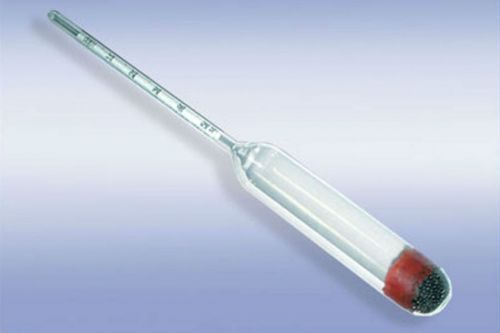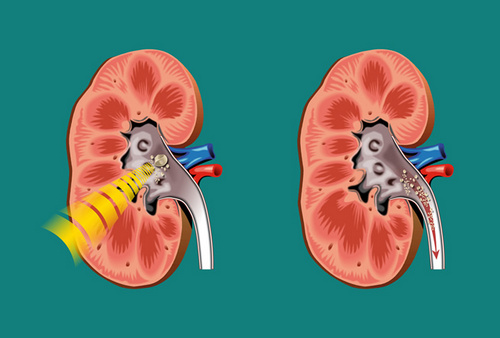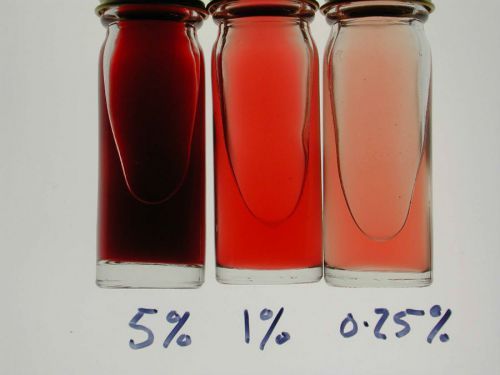The term “gipostenuriya” in the Greek the meaning is obscure to modern man, literally it means “reduced force of urine”. In medicine, this power refers to the ability of the kidneys to produce a solution of a certain concentration in different conditions.
The chemical composition of urine is a water-dissolved substances (salts, urea, mucopolysaccharides, creatinine, uric acid and others). In total, it includes more than 150 different components, including white blood cells, enzymes, hormones.
They represent products of disintegration of the tissues, waste products of biochemical processes. The kidneys are “obliged” to cleanse the body of unwanted compounds or their excessive accumulation.
Quantitative indicator is the relative density relative to distilled water or its specific weight. It is measured in a simple way, plunging into the urine prometr. Gipostenuriya is the low relative density of urine. To understand the mechanism of its formation need to turn to some of the kidney functions.
What processes affect the density of urine?
The content of dissolved substances in the urine depends on the three stages of urine formation:
- filtering through the basal membrane of the glomeruli;
- reabsorption (back suction) in the tubules of nephrons;
- secretion in the tubules – further selection from the blood of toxic substances with the participation of the enzyme systems.
The more substances enter into the urine, so it is concentrated and greater density. But this rate could affect a large number passed through the kidneys of the liquid. When the solution is diluted, a lot of urine, and the concentration of substances decreases.

For immersion prometra must have at least 50 ml of urine volume in the tank
Normal fluctuations in density is quite significant during the day: 1015-1026 g/l in the morning (during the night, the water drinking has not been received) to 1002-1015 during the day.
For a healthy person it depends on:
- drinking and eating mode throughout the day;
- ambient air temperature;
- physical activity.
Boundary Hypo – and gipermenoree index 1010. Is the density of blood. If the urine is the same concentration of substances, a condition called isosthenuria. Relative density 1002-1010 indicates hyposthenuria.
What is considered the norm in children?
In young children the kidney become full in 2-3 years. In infants according to the weight, it is possible to judge hyposthenuria only according to their standards.
The boundary rules shown in table
| The age of the child | The lower limit of the normal relative density in g/l |
| newborn | 1008 |
| 6 months | 1002 |
| 12 months | 1006 |
| after 2 years | 1010 |
As the figures show, the indicators hyposthenuria in children should be treated with caution.
Reasons
Reasons hyposthenuria may be any pathology that would limit the ability of the kidneys to filter water and dissolved substances or violating the process of reabsorption and excretion. After receiving such information, the tests, the doctor must first exclude the influence of copious drinking and diuretics, prior to collection of urine (for heart failure for withdrawal edema). It plays the role of a strong dilution with a larger volume of water.

If the physiological mechanisms are not established, the patient should think about the two options for destruction:
- when diabetes insipidus;
- the beginning of the formation of kidney failure.
As a sign of the inability of the kidney to concentrate urine gipostenuriya occurs:
- in chronic pyelonephritis;
- the polycystic kidney disease;
- hydronephrosis;
- chronic glomerulonephritis;
- interstitial nephritis;
- poisoning by nephrotoxic poisons;
- benign prostatic hyperplasia in men;
- kidney disease with diabetes;
- removing massive edema or inflammatory infiltrates;
- fasting and prolonged low-calorie diets (alimentary dystrophy);
- leptospirosis;
- the nephrosclerosis (renal tissue is replaced by scar, not performing any function).
In chronic renal failure a violation of concentrating ability increases gradually, passes through a stage isosthenuria with constant index not exceeding 1010 g/l.
If the density during the day below the border, then talk about gipoazotemia. This term indicates the lack of oscillations in the functionality of the epithelium of the tubules.
How to identify a pathology?
To ensure constant hyposthenuria assigned to the analysis of urine by zimnitskiy. The real test: the urine is held after every 3 hours (some prefer 4), all the jars are collected and stored in the refrigerator. Each serving is determined by the density.
Only if there is a constant indicator is below 1010 g/l in all samples talking about hyposthenuria. Also, take into account the daily urine and the amount of alcohol consumed by the patient of a liquid. So, exclude physiological mechanisms.
If the indexes of test of General dubious, there shall be a trial of Folgard. It differs from test in General artificial conditions of water stress or shoedini. Often used the variant with xerophagy. The patient does not give liquid diet the day before the study and in the morning. Urine was collected after 2 hours. Just enough for 4 servings. Normal in 2-3 servings the weight must be increased to 1030-1045. The lack of threshold in the 1010 supported the conclusion hyposthenuria.
Accurate data is also obtained using the method of cryoscopy when the freezing of urine is determined by the freezing point, it is different for certain concentrations
What are the symptoms you may notice in a patient?
Gipostenuriya itself is a symptom of any disease. Therefore, to ignore its symptoms or identify specific complaints of the patient are not possible.
Low density of urine may occur on the background of the complaints:
- painful, frequent urination with sharp pains (dysuric syndrome);
- pain in the lumbar region, intense or dull, radiating to the groin and sexual organs, worse after shaking in transport or due to the violation of the diet (alcohol, spicy and a lot of canned food);
- suprapubic pain;
- difficulty urinating;
- constant urination, urinary incontinence;
- high fever with chills, headaches, aching joints;
- thirst;
- itching;
- fatigue;
- swelling of the face, arms, legs.
The patient may note a change in the color of urine, appearance of floc, blood.
What doctors should I contact?
If the patient has typical symptoms of kidney failure, you must contact your local therapist (from children to the pediatrician). Sign hyposthenuria will be identified when the designated examination.
At the same time checked:
- General clinical analysis of blood, urine;
- biochemical blood tests for protein, sugar, electrolytes, creatinine, urea;
- if you want to hold the biochemical analysis of urine.
The decision to instrumental examination, or more specific samples taken by physicians
Only test results sent to the urologist, nephrologist or endocrinologist depending on the suspected disease. Doctor it is important to identify the cause hyposthenuria in order to prescribe treatment.
You should not attempt to interpret detected in a single urine sample changes alone or with different friends. Reliable conclusion only gives a full examination and knowledge of the whole picture of the disease. To recommend the right treatment may doctor after studying and comparing all the results.



